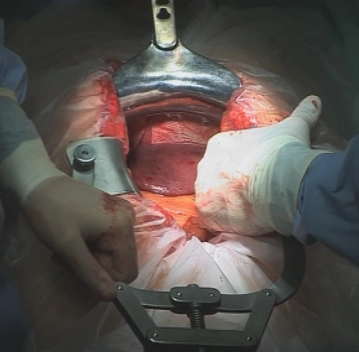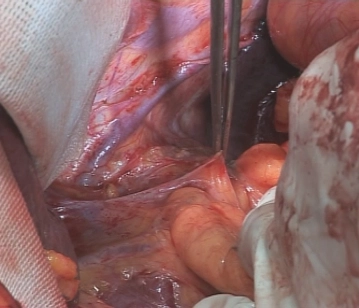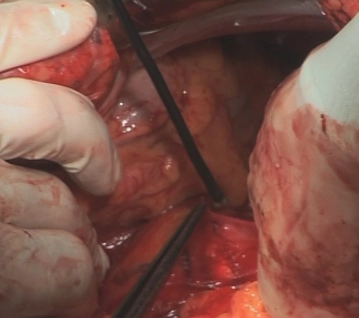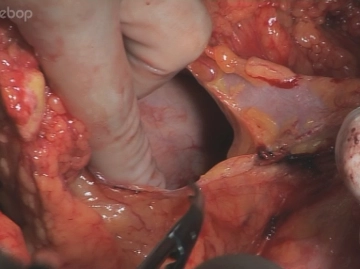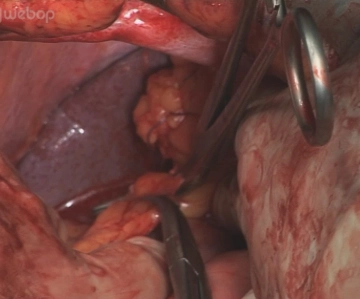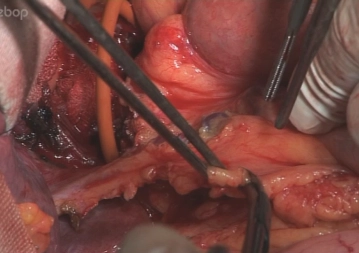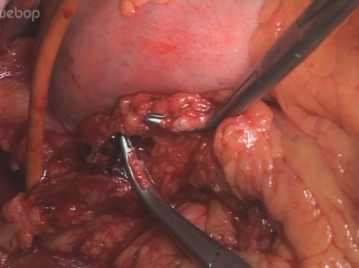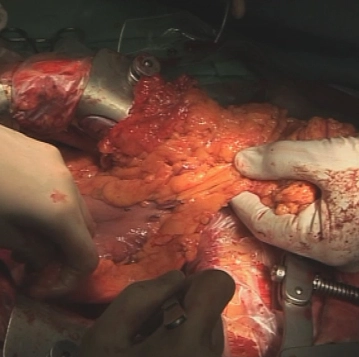After checking patient position, skin prepping and sterile draping make a midline skin incision from the xiphoid to the navel, passing the latter on the left. After transecting the subcutaneous tissue with electrocautery open the abdominal cavity along the linea alba.
Insert a circular wound edge protector, thoracic retractor and the Ulrich cable winch retractor.
Explore the entire abdominal cavity to rule out peritoneal and liver metastasis, if necessary, by ultrasonography.


